Forest in Bihar: Detailed summary with map - BPSC (Bihar) PDF Download
Introduction
Geographically, Bihar is endowed with rich deciduous forests, spreading over the southernmost district of Kaimur; Rohtas, Aurangabad, Gaya, Jamui, Munger and Banka. Moreover, the moist deciduous forest occupies the districts of West Champaran in the northern plains of Bihar. Overall, the forest and logging sector of Bihar has accounted for 1.6% of the Gross state value addition (GSVA) during 2014-2019.Share of Forestry and Logging in Agriculture GSVA (2017 to 2019).
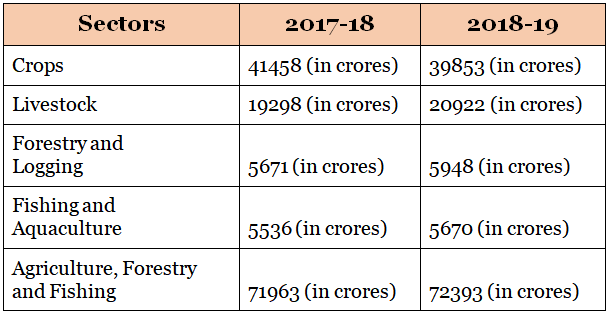
The area under forest in Bihar
The legally notified area of forest as per the records of the government are classified under Recorded forest area (RFA). Under the provision of Indian Forest act of 1927 or States acts, the recorded forest area consists of the Reserved forest, the protected forests and the Unclassified forests.The Recorded forest area of Bihar
In 2019, the recorded forest area in Bihar was nearly 7.3% of the total geographical area of Bihar. In terms of percentage, it was around 6877km2. However, the share of the forest of Bihar (7.3%) is much lesser than the All-India average of 23.3%. On the other hand, Uttarakhand has the highest share of the recorded forest at 71.1%, while Haryana has only 3.5%, which is the lowest. In terms of protected forests, Bihar’s area stood at 6183 km2, which is 6.6% of the state’s geographical area.Recorded Forest Area (RFA) in Selected States of India (2019)
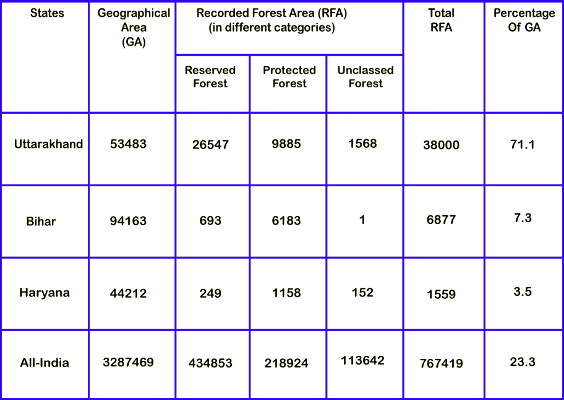
Forest Cover in Major States of India
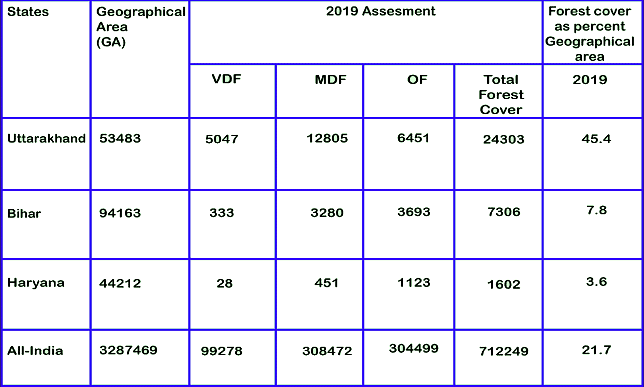
Area under forest cover: In terms of the area under forest cover, Madhya Pradesh has the largest forest cover at 77,482 km2, accounting 10.9% of the total forest cover in the country. However, the lowest forest cover was observed in Haryana 1602 km2 which was 0.2%. Following the same trend, the forest cover of Bihar was also low 7306 km2, accounting for 1% of the total forest cover in India.
Classification of Forests
Based on the density of crown, the forests are classified under five categories namely- very dense forest (V.D.F), Moderately dense forests (M.D.F), Open forest (O.F), scrubs and non-forests.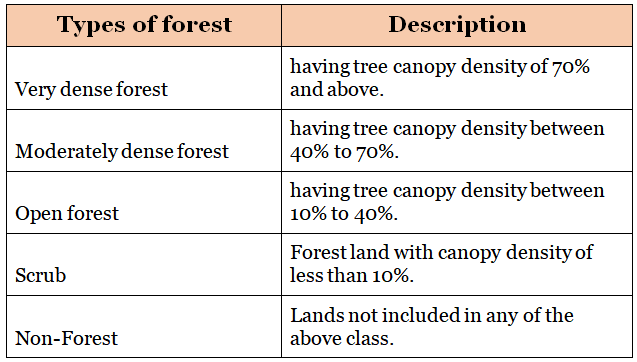
Forest and tree cover in Bihar

It is very appreciating that the total forest cover in Bihar has marginally increased from 6845 km2 in 2011 to 7306 km2 in 2019. The total forest and tree cover together constituted about 9309 km2 in 2019. In terms of percentage, it was about 9.9% of the total geographical area of Bihar.

Forest’s classification in Bihar
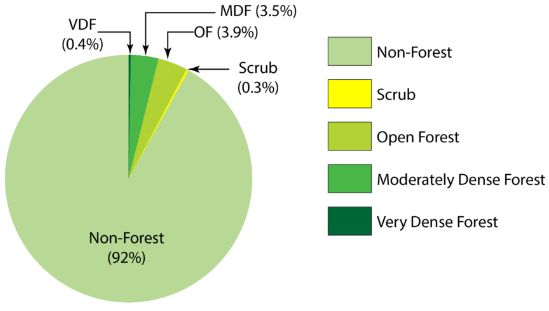
Districtwise forest cover in Bihar
The districts of Kaimur, West Champaran, Rohtas, Jamui and Gaya together accounted for 53.0% of the total forest cover in Bihar during 2019. However, southern Bihar is endowed with dense forest.
Highest forest cover: Kaimur (1056.4 km2)
Lowest forest cover: Jehanabad (No forest)
Forest cover in Kaimur and Jehanabad.
Among the types of forest, West Champaran owns the largest very dense forests, having a crown density above 70%. On the other hand, Kaimur is the leading district in terms of open forests of Bihar, accounting for 531.3 km2 (14.4% of total forest cover).
Top Three districts in terms of geographical area of forest in districts

Biodiversity and Wildlife in Bihar
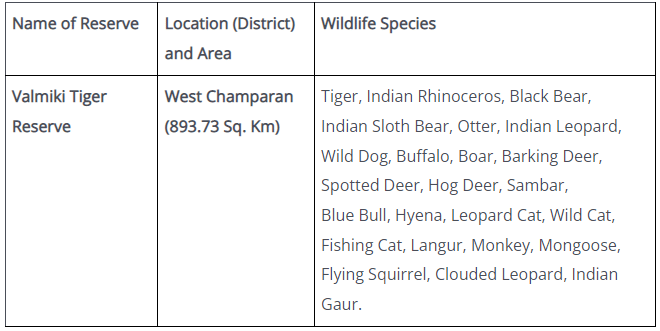
Wildlife Reserve in Bihar- Source: Department of Environment, Forest and Climate Change, GoB.
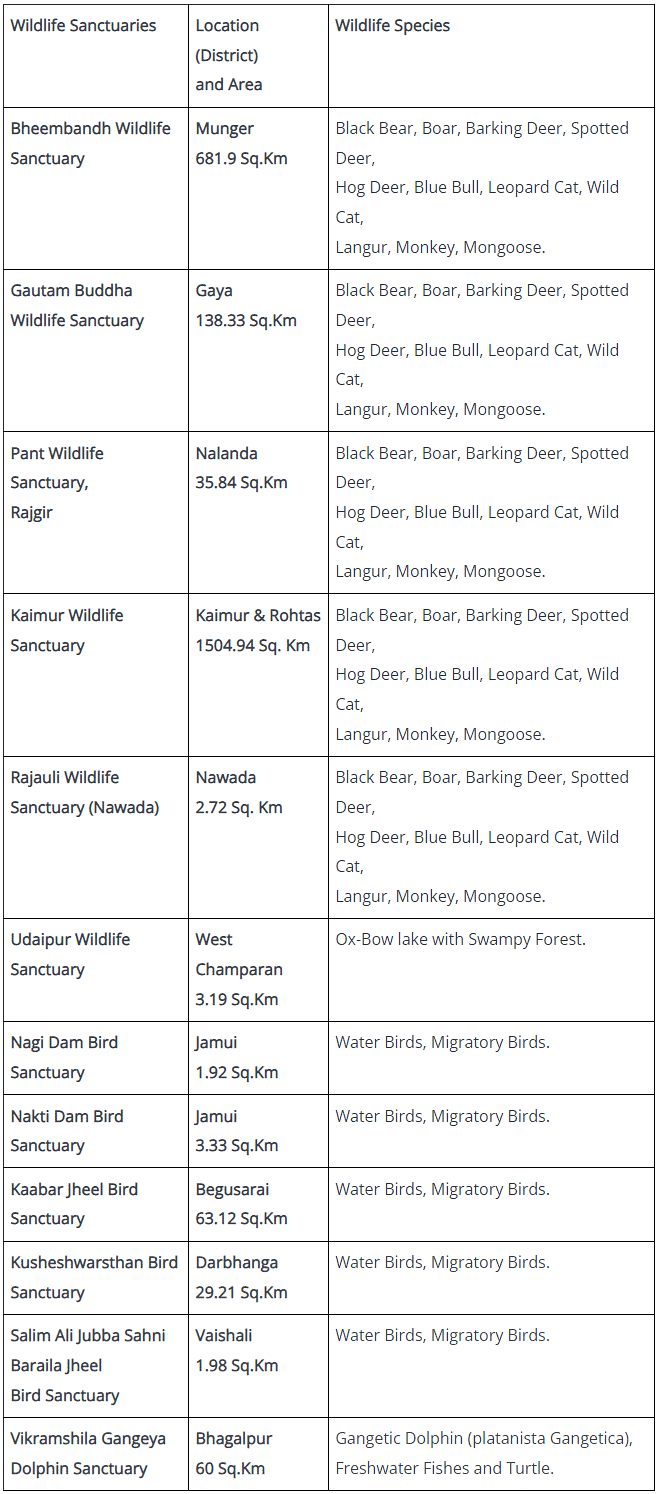
Schemes of forest department of Bihar
The department of environment, forest and climate change of Bihar has undertaken various measures to protect the environment of the state. The following are the major schemes of the Bihar government to conserve forests.- Krishi Vaniki- other species Yojana: This scheme has been implemented since 2012-13 in Bihar to encourage plantation of other species. For instance, Teak, Mahogany, Beechwood, Rosewood and Khair. Under this scheme, free samplings are being provided to the farmers during the rainy season. During 2018-19, about 57.78 lakh saplings of the other species have been planted in Bihar.
- Krishi Vaniki- Poplar Yojana (ETP): Under this scheme, the farmers of Bihar are being motivated to plant commercial Poplar plants to increase tree cover for environmental protection. Also, the farmers get cash incentives towards the maintenance of the plants.
- Mukhya Mantri Niji Paudhshala-Poplar ETP yojana: This scheme aims to set up nurseries with quality plants belonging to different species through entrepreneurs and farmers. The farmers get subsidies at the rate of Rs 10000 for cutting per acre. Also, this scheme is implemented in all the districts of Bihar.
- Har Parisar Hara Parisar Yojana: Due to the shortage of forest land in Bihar, this scheme was launched to increase both the purity and greenery in the environment. Also, the vacant lands on the premises of government and non-government institutions are being planted with suitable species.
- Greening of Urban spaces: The prime objective of this scheme is to promote projects related to landscaping of urban parks and green spaces in the urban areas.
- Jal- Jeevan Hariyali Campaign: Due to climate change and global warming, the government of Bihar is focusing on managing water, forests and other natural resources to reduce the risks of environmental degradation. Therefore, a target has been fixed for plantation of 1.5 crore plants per year. Initially, the campaign for the Jal-Jeevan-Hariyali scheme was launched on August 9, 2019, on Bihar Earth day.
FAQs on Forest in Bihar: Detailed summary with map - BPSC (Bihar)
| 1. What is the current status of forests in Bihar? |  |
| 2. Where can I find forests in Bihar? |  |
| 3. What is the significance of forests in Bihar? |  |
| 4. How does the Bihar Public Service Commission (BPSC) relate to forests in Bihar? |  |
| 5. What are some initiatives taken by the government to conserve forests in Bihar? |  |














